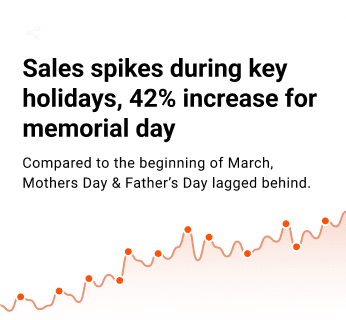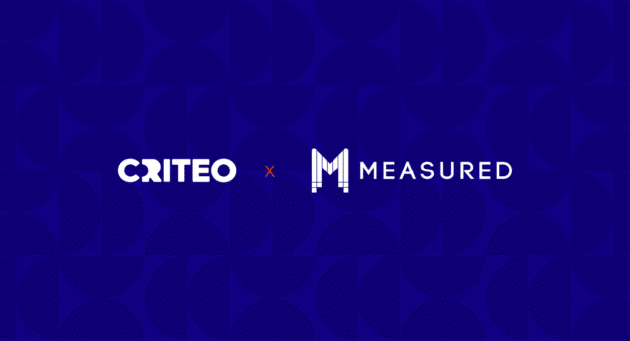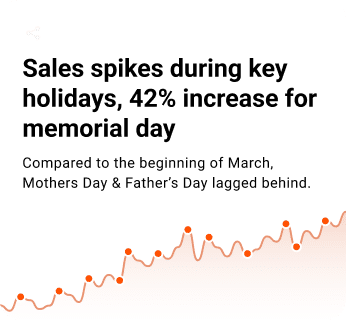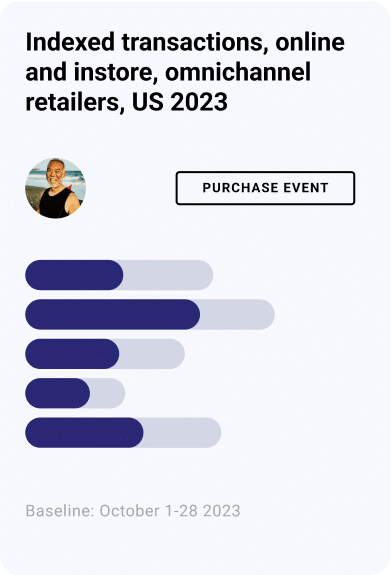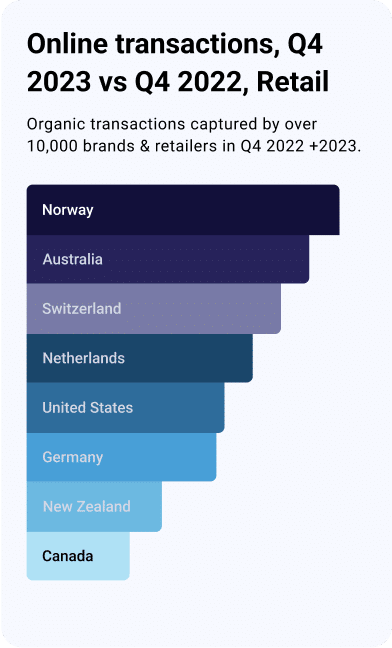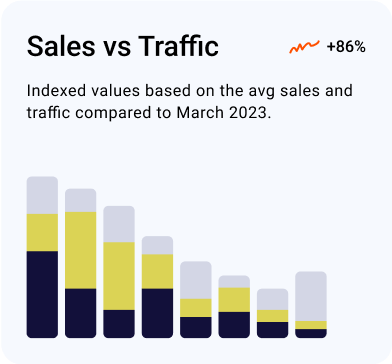The holiday season, or festive season as our European friends call it, is a pivotal time for retailers and brands. It’s when consumers are browsing and buying more — and looking to be inspired by the perfect gift idea. But this year, the stakes are higher than ever before.
Between high competition, disrupted supply chains, delivery delays, and addressability changes in the advertising industry, marketers have a lot more riding on the outcomes of this holiday shopping season. That’s why this year, it’s even more important for marketers to be delivering on promises to consumers, standing out in crowded markets, and testing future-proofed solutions that not only drive results today, but also enhance their strategies for years to come.
And with the continuing rise of ecommerce, marketers also need to ensure they’re doing all of this on the open internet. In a 2020 study, The Harris Poll found that the majority of consumers’ time spent online (66%) is on the open internet, yet marketers’ ad spend allocated to the open internet is only 37%, with the remaining 63% going to walled gardens 1. This discrepancy shows that that the majority of spend isn’t going to the places where consumers are spending most of their time, which is even more important during a shopping season that is ripe for brand and product discovery.
On top of needing to reach and engage consumers where they’re spending time, there are three key things marketers need to remember this holiday shopping season that will best optimize their strategies now, and into the next era of advertising:
1. Maintain momentum throughout the entire holiday season.
Holiday shopping no longer happens only on Black Friday or during Cyber 6 — it lasts the entire season. This year, we even saw that while Black Friday sales were down, Cyber Month sales were above pre-pandemic levels around the world. This points to the fact that consumers are shopping earlier and taking advantage of deals beyond key sales events.
That’s why it serves marketers well to maximize on the momentum of the entire season, rather than focusing on short bursts of promotion around single sales events. Even if they’re not in a buying mindset yet, consumers are in a state of constant commerce, so any positive interaction with them can help drive marketers’ bottom lines.
2. Inform every touchpoint with first-party data and AI.
Given that every interaction is a chance to create a rich experience for consumers, every advertising touchpoint should be as personalized as possible. This level of customization requires first-party data and AI, which help marketers understand consumers and activate campaigns that give them the most value.
For instance, marketers can leverage inventory data to ensure their ads only feature in-stock products that aren’t subject to supply chain issues. This prevents negative experiences where consumers are shown ads for out-of-stock items and are then disappointed when they see it’s sold out after clicking through to the brand or retailer’s website. Using first-party data and AI can help build a marketers’ reputation as reliable and organized, which is particularly important this time of year.
And leveraging first-party data this holiday season, or running campaigns that grow first-party data, will help marketers future-proof their strategies since first-party data is durable and doesn’t rely on third-party cookies or IDFAs. And because holiday campaigns tend to be higher volume, it’s a great time for marketers to test more new audience solutions, including contextual targeting that helps them reach new or hard-to-find customers, as well as advertising on retailers’ sites to engage consumers while simultaneously optimizing advertising models for the future of addressable media.
3. Reduce fragmentation in your tech stack.
It’s no secret that the advertising industry is deeply fragmented. This causes gaps across the demand and supply sides of the ecosystem that create inefficiencies in marketers’ tech stacks, and ultimately cost them valuable advertising budget. It’s even estimated that only 51% of marketer spend reaches media owners due to these inefficiencies2, resulting in significant waste.
That’s why marketers should be strategic when choosing partners, to ensure they’re working with companies that minimize those gaps, rather than expanding them. An ideal technology partner connects the buy and sell sides to help manage and activate data across both sides of the ecosystem, optimizing campaign efficiency and performance.
Building better commerce outcomes
No matter what, a promising approach for marketers, during the holiday season, and beyond, is to put the consumer at the center of their strategy. This is done by leveraging commerce media, which uses first-party day and AI to understand which consumers are highly interested in or actively in-market for the products or services that brands and retailers are selling, to ensure more value on all sides.
The Criteo team knows this is a crucial time for marketers and we’re working towards building out our Commerce Media Platform by leveraging demand and supply technologies, and a First-Party Media Network that would connect our clients’ advertising across both the buy and sell sides for better commerce outcomes. These capabilities will be built on the 15 years of experience we have developing AI technology to find the perfect audience and personalize commerce experiences all year round.
By using first-party commerce data, AI, and a privacy-first approach, commerce media will create better experiences for consumers by only delivering ads for things they’ve actively shown an interest in, and only from advertisers that they have consented to. This will build trusted and valuable relationships between consumers and marketers that span beyond the holiday season and well into the wide-open future.
1The Harris Poll and OpenX, “The open web vs. the walled garden”, 2020
2ISBA/PwC Supply Chain Transparency Study, 2020












